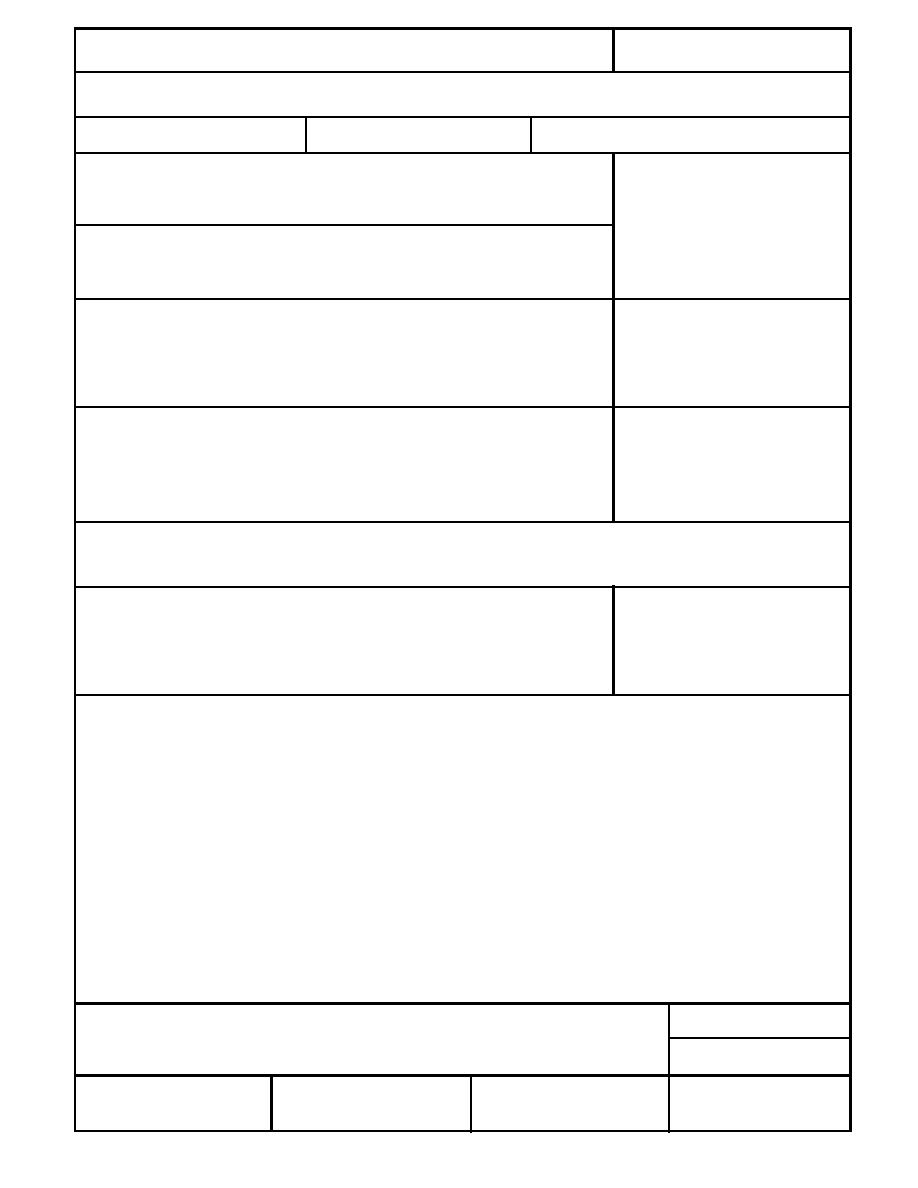
Form Approved
REPORT DOCUMENTATION PAGE
OMB No. 0704-0188
Public reporting burden for this collection of information is estimated to average 1 hour per response, including the time for reviewing instructions, searching existing data sources, gathering and
maintaining the data needed, and completing and reviewing the collection of information. Send comments regarding this burden estimate or any other aspect of this collection of information,
including suggestion for reducing this burden, to Washington Headquarters Services, Directorate for Information Operations and Reports, 1215 Jefferson Davis Highway, Suite 1204, Arlington,
VA 22202-4302, and to the Office of Management and Budget, Paperwork Reduction Project (0704-0188), Washington, DC 20503.
1. AGENCY USE ONLY (Leave blank)
2. REPORT DATE
3. REPORT TYPE AND DATES COVERED
December 1997
4. TITLE AND SUBTITLE
5. FUNDING NUMBERS
Local Variation in Winter Morning Air Temperature
PR: 4A161102BT25
6. AUTHORS
WP: 304
Austin W. Hogan and Michael G. Ferrick
WU: EC-B03
7. PERFORMING ORGANIZATION NAME(S) AND ADDRESS(ES)
8. PERFORMING ORGANIZATION
REPORT NUMBER
U.S. Army Cold Regions Research and Engineering Laboratory
72 Lyme Road
CRREL Report 97-9
Hanover, New Hampshire 03755-1290
9. SPONSORING/MONITORING AGENCY NAME(S) AND ADDRESS(ES)
10. SPONSORING/MONITORING
AGENCY REPORT NUMBER
Office of the Chief of Engineers
Washington, DC 02314-1000
11. SUPPLEMENTARY NOTES
For conversion of SI units to non-SI units of measurement, consult ASTM Standard E380-93, Standard Practice for Use of the
International System of Units, published by the American Society for Testing and Materials, 1916 Race St., Philadelphia, Pa.
19103.
12a. DISTRIBUTION/AVAILABILITY STATEMENT
12b. DISTRIBUTION CODE
Approved for public release; distribution is unlimited.
Available from NTIS, Springfield, Virginia 22161
13. ABSTRACT (Maximum 200 words)
Results of temperature measurements, which may be applied to inference of winter temperatures in data-sparse
areas, are presented. The morning air temperatures during three winters were measured at 80 places in a 10- 30-
km area along the Connecticut River. NOAA climatologies show this region to have complex spatial variation in
mean minimum temperature. Frequency analysis techniques were applied to evaluate the differences in daily local
temperature. Temperature lapse or temperature inversion in the study area was inferred from the difference of
surface temperature measurements 100 and 300 m above river level. The frequency of inferred temperature lapse
and the inferred lapse rate diminished as snow cover increased. The frequency of inferred temperature inversion
and inversion strength increased as snow cover increased. When more than 20 cm of snow covered the ground, an
additional surface inversion was frequent in the layer less than 100 m above river level, and two-thirds of river level
temperatures less than 20C occurred concurrent with these conditions. The daily temperature differences at the
individual points, with respect to a defined point, were lognormally distributed. The magnitude and geometric
standard deviation of temperature differences throughout the study area were larger on mornings when inversion
was inferred. With respect to topography, temperature differences and the geometric standard deviation of
temperature differences were smaller along flats or among basins than along or atop slopes on mornings when
inversion was inferred. It is proposed that some meteorologically prudent inferences of surface temperature and
near-surface temperature lapse or temperature inversion can be made for similar data-sparse areas.
14. SUBJECT TERMS
15. NUMBER OF PAGES
50
Air temperature
Heat islands
Winter
16. PRICE CODE
Connecticut River
Meteorological inversions
17. SECURITY CLASSIFICATION
18. SECURITY CLASSIFICATION
19. SECURITY CLASSIFICATION
20. LIMITATION OF ABSTRACT
OF REPORT
OF THIS PAGE
OF ABSTRACT
UNCLASSIFIED
UNCLASSIFIED
UNCLASSIFIED
UL
Standard Form 298 (Rev. 2-89)
NSN 7540-01-280-5500
Prescribed by ANSI Std. Z39-18
298-102



 Previous Page
Previous Page
